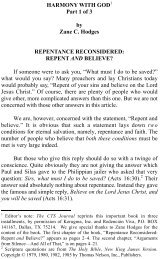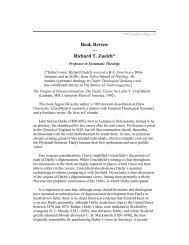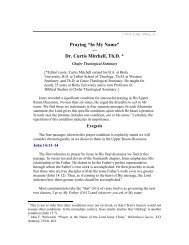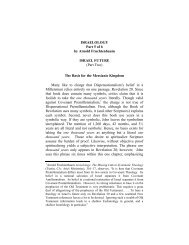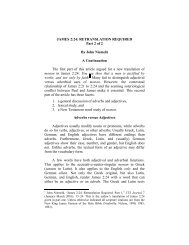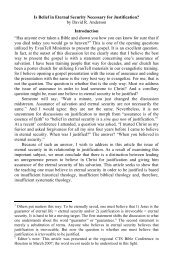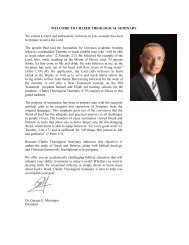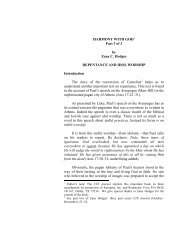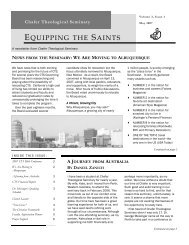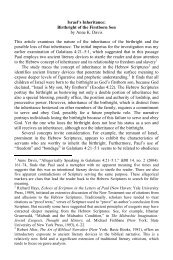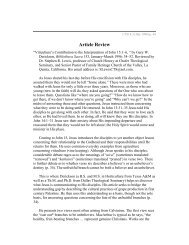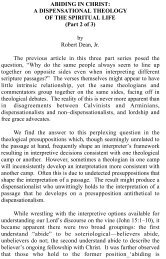Biblical Theology: An Evangelical Approach by David J. MacLeod ...
Biblical Theology: An Evangelical Approach by David J. MacLeod ...
Biblical Theology: An Evangelical Approach by David J. MacLeod ...
You also want an ePaper? Increase the reach of your titles
YUMPU automatically turns print PDFs into web optimized ePapers that Google loves.
40CTS Journal 12 (Fall 2006)end. 73 This method seems best suited to describing and explaining NewTestament theology as a whole, while the second method is the essentialmethod for studying an individual book or author. Even while studying anindividual book, however, one will want to show how the author’s ideasdeveloped and how they are related to the ideas in earlier and subsequentwritings. 74The Steps of the ProcessExegeting the Book. At this point the question might be asked, How does onego about the task of <strong>Biblical</strong> <strong>Theology</strong>? The present writer would suggest foursteps. First, applying sound hermeneutical principles the student shouldsubject his material to a detailed exegetical analysis. 75 In the process, heshould use the standard tools, not neglecting the commentaries (both new andold) 76 and periodical literature.Tracing the Argument. Having exegeted the book paragraph <strong>by</strong>paragraph, the student should examine and write out the author’s argument ordevelopment of thought. The purpose of this synthetical study is to make clearthe author’s theological emphases and his doctrinal sequence.Establishing the Center. With the theological emphases of the book infront of him, the student should determine the author’s primary theme or73 Ibid., 26.74 Marshall, New Testament <strong>Theology</strong>, 27.75 For a basic introduction to New Testament exegesis, see John D. Grassmick,Principles and Practice of Greek Exegesis (Dallas: Dallas Theological Seminary,1976).76 Several years ago a personal friend of the writer of this article completed hisdoctorate in education at a leading university. His adviser warned him not to citeliterature more than two years old in his dissertation! Such modernity may beappropriate for the social sciences, but it is unacceptable to the evangelicaltheologian. It is with some amusement that the present writer remembers acolleague’s horror at finding a reference to A. B. Bruce in the writer’s dissertation onthe Book of Hebrews. Although the student must take into account (again to useHebrews as an example) the contemporary works of Luke Timothy Johnson, Craig R.Koester, Harold W. Attridge, William L. Lane, Paul Ellingworth, George H. Guthrie,George W. Buchanan, F. F. Bruce, Philip E. Hughes, Matthis Rissi, Otto Michel, C.Spicq and others, he must not neglect the classic works of, among others,Chrysostom, Martin Luther, John Calvin, John Owen, Marcus Dods, Franz Delitzsch,James Moffatt, Alexander Nairne, and—yes—A. B. Bruce. To dismiss the greatexpositors of the past is “both naive and arrogant.” Cf. Brevard S. Childs, The Book ofExodus (Philadelphia: Westminster, 1974), x.



